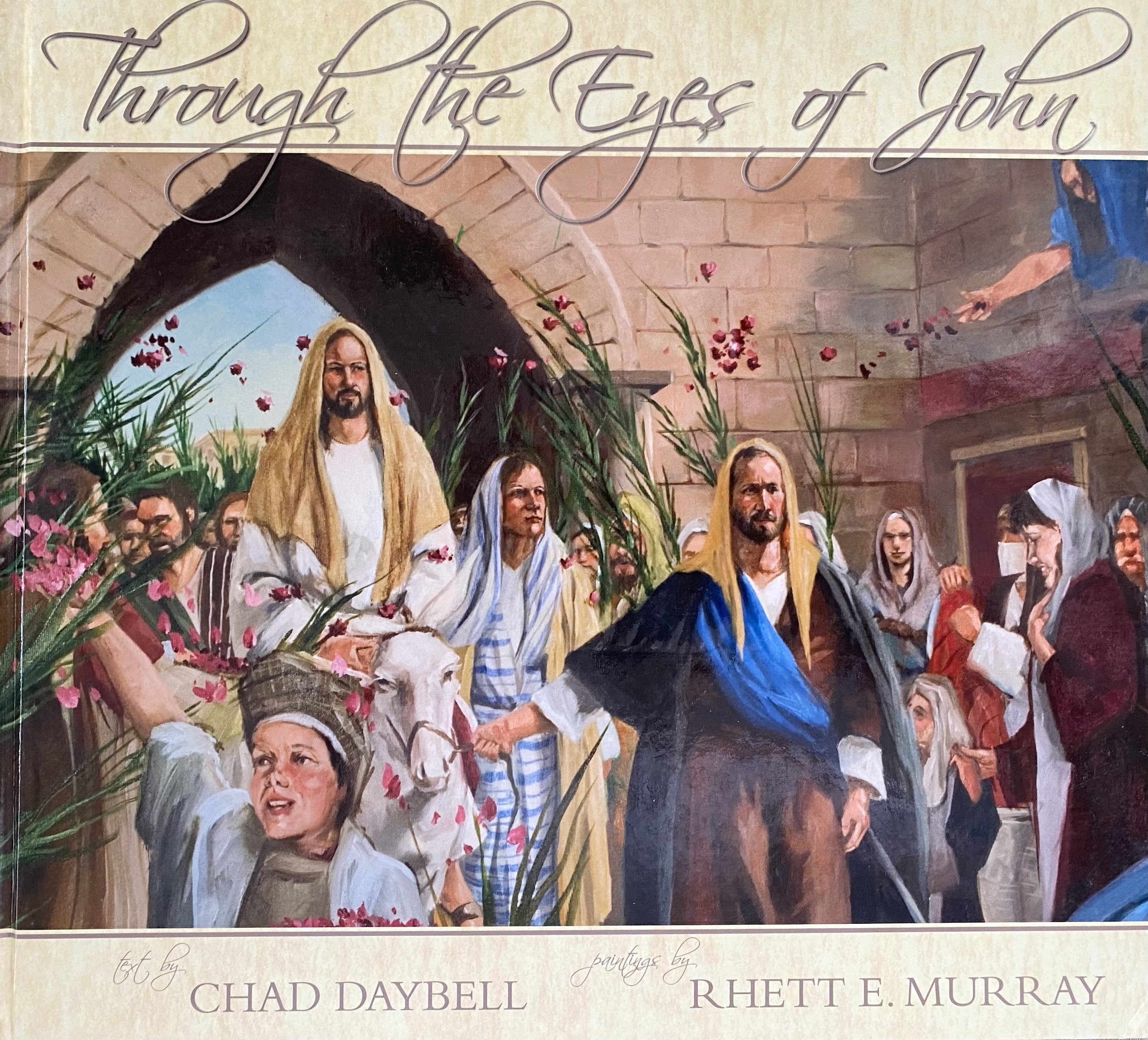A Review of Through the Eyes of John
I was having a great time reading Through the Eyes of John: The Beloved Apostle Watches the Savior’s Final Days on Earth by Chad Daybell. I liked so many things about this book:
John’s narration provides much-needed variety among many storybooks about Passion Week.
John gives us his perspective on what Jesus is feeling and thinking. He notes changes in his demeanor as the week progresses. As a child, I, like my friends, didn’t give a lot of weight to Jesus’ suffering because He was God, and thus we assumed we could endure pain that humans could not. The truth that Jesus was fully God and fully man takes maturity to grasp. Including Jesus’ emotions in the story helps children see that Jesus experienced sorrow and grief even before the horror of his crucifixion.
Children are given a fuller-orbed picture of John both before he meets Jesus and at the end of his life, when he is exiled on Patmos and writing the Book of Revelation.
The paintings by Rhett E. Murray are somber and attractive and far better than most I’ve seen. Sadly, the characters are Caucasian rather than Middle Eastern, a common occurrence in many storybooks.
And then, when things were going so well, the book veered from Scripture and the impact of the empty tomb on the disciples.
John and Peter run to the tombstone. They see the folded linen burial cloth and the empty tomb and return despondent. “What?” I said. I checked each of the four Gospels to make sure I wasn’t confused. There, in plain type, it says John and Peter immediately believed that Jesus was alive when they saw the empty tomb. John 20: 5-9. It’s important to understand that once these well-taught disciples saw Jesus’ body was gone, they understood what Jesus had said would happen after he died,
The author turns the story of Peter being reunited and forgiven by Jesus into the time and place where the disciples realize Jesus is alive. In truth, it is the third recorded time they see him alive.. See John 21:14. The story of Peter being forgiven for denying Jesus is omitted.
Because my budget doesn’t allow me to buy every book I want, I have a propensity to pick up used religious books whenever I can find them. This one came from a children’s consignment store and appeared to be self-published.
A bit more research revealed that the author is a member of The Church of Christ of Latter-day Saints, also known as Mormonism. While Mormons claim to be “Christian” they are not. They do not believe in original sin (the belief that our sin nature came from the disobedience of our first parents, Adam and Eve). They do not believe in salvation by faith alone; instead, they teach that one must work and believe to be saved. They do not believe in the Trinity. These are critical differences antithetical to Christianity. Interestingly these key doctrinal differences aren’t at play in this book. Still, the author takes liberty with the post-resurrection story. Did he run out of pages that he conflated two stories? Authors have to make difficult editing decisions all the time, but altering facts, especially ones surrounding belief in Christ, is unacceptable.
At times, the Christian community has used Mormon resources. Because Mormon movies are wholesome, Christians have used them. Much of their non-religious homeschool materials are well done as seen on Pinterest and Etsy. However, I can’t in good conscience recommend this as a book one should purchase.
However, if you find it in a used bookstore for $1 like I did and you’re willing to amend some errors with a pen you will have created a great learning opportunity. When your children ask why you, of all people, wrote in a book, you can explain how to evaluate Bible storybooks against God’s Word critically. And that is a great learning experience!
